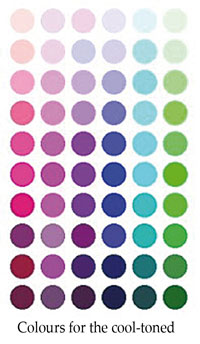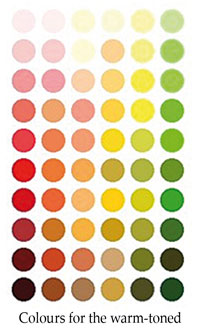There is a reason why some days you’re showered with compliments for looking your best. And some other times, even when you’re feeling upbeat, you get asked why you’re looking so sullen. Believe it or not, the answer may lie in the colours you choose for your clothes, accessories, and make-up. A particular colour can make you appear authoritative while another may make you appear casual. Some colours could make you look mature, while others could make you look youthful. Colour analysis can help you decide which colours enhance your personality. This does not mean that you stick to wearing only those colours—you can wear any colour you want. But once you know the colours that work for your, you can put together the outfit such that it looks like a well-thought-out ensemble and makes you look your best.
Use your personal colour
Favourable colours could be determined according to the personal colouration of an individual. And by personal colouration we mean the colour of your hair, eyes, lips and skin.
If an individual repeats a personal colour in his attire, the appearance looks attractive and harmonious. This type of colour dressing is safe and tested, however it limits your choice.
 Dress for your skin tone
Dress for your skin tone
Another tip is to choose colours according to your skin tone. We either have a warm skin tone or a cool one. People with golden undertones are warm-toned and ones with pink or rosy undertones are cool toned. There are various schools of thought for understanding the skin undertone. Some say if your veins on the inside of your elbow show a green hue, then you are warm toned and if they are blue hued, you have a cool tone.
One easy method you could use to find out your skin tone is to keep a golden cloth near your face. If your skin glows then you are warm-toned and if a silver cloth makes you glow, then you are cool-toned.
Once you’ve determined whether you are cool or warm-toned, you can use the chart below to select colours that are suitable for you.
 A warm-toned person looks more attractive wearing a colour from the choices given in the warm-toned block and vice-versa. However, if you are cool-toned and love wearing orange or ochre colour, you could definitely wear it and add a suitable warm-toned colour element near or around your face, like a lip shade, a necklace or a neck scarf.
A warm-toned person looks more attractive wearing a colour from the choices given in the warm-toned block and vice-versa. However, if you are cool-toned and love wearing orange or ochre colour, you could definitely wear it and add a suitable warm-toned colour element near or around your face, like a lip shade, a necklace or a neck scarf.
Contrast for impact
Colours play an essential role in professional/corporate dressing. A high contrast in colour gives quite an impact, rather than a medium or low contrast. Low contrast is when there is not much difference in the colours of an outfit. For instance, a grey skirt with a black top and black shoes is low contrast.
Medium contrast is when there is a medium contrast in colours of the outfit. For example, a grey trouser worn with a sky blue shirt or top. High contrast is when you team two or more strikingly light and dark colours. Colour contrast totally depends upon the role and occasion. There could be those regular office days where you could wear a low or a medium contrast and at times your role would demand a high and powerful contrast [a boardroom presentation, an important client presentation or that important deal negotiation]. A weak or a low contrast makes you appear small while a strong contrast makes you look large.
Colours and chakras
Colours have a psychological impact too. The seven chakras of our body are related to specific colours. The muladhara is linked to the colour red, swadhisthana to orange and so on. A colour therapist could recommend the colours that are required to heal or balance your chakras.
Also read » The Rainbow Within
That one is my colour
Each one of us also has our individual colours. A visualisation exercise conducted by a therapist can help you identify them. One could work in tandem with the colour analysis chart and our own individual power colours. For example, if the colour chart recommends colours like green, blue or purple [cool colours] and your own individual power colour is brown [warm colour], you could wear brown as a bracelet or footwear.
When it comes to colour combinations, the best inspiration is nature. Just look around and you will see lovely colour combinations that you can imbibe in your style and dressing. I consciously try to introduce a new colour to my wardrobe as often as I can. The latest being a bright orange lip shade that I have added to my make-up box.
Before I conclude here’s one tip: Go out and experiment with fuchsia red. It’s a strong colour but not much used, especially by Indian women.
 Spot an error in this article? A typo maybe? Or an incorrect source? Let us know!
Spot an error in this article? A typo maybe? Or an incorrect source? Let us know!
